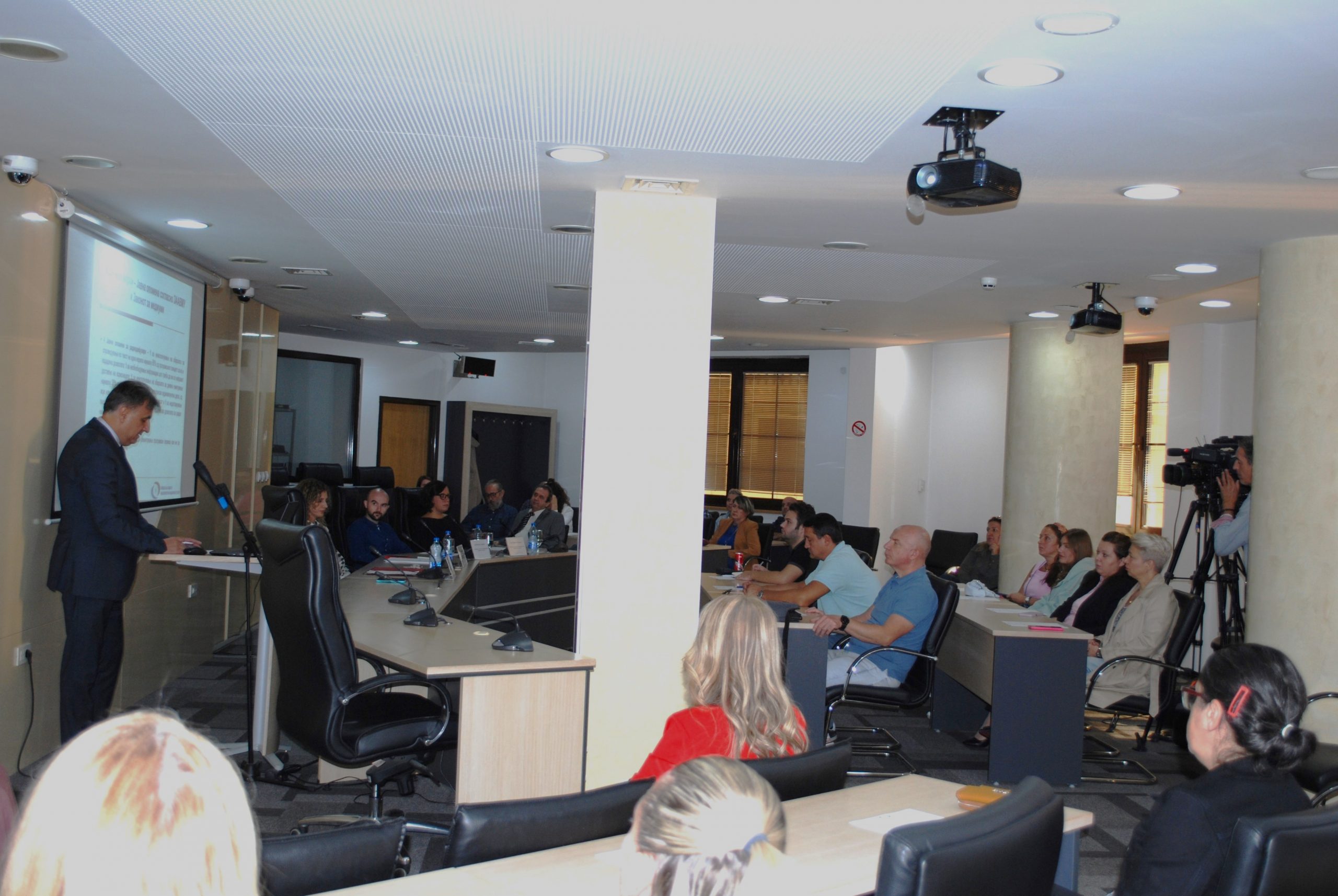 Skopje, 27 September 2024 – The Agency for Audio and Audiovisual Media Services held its third public meeting for this year, at which Agency Director Zoran Trajchevski presented an overview of the activities carried out in accordance with the Annual Work Programme for the past three months. Those present had the opportunity to hear about the activities related to the supervisions conducted over radio broadcasters, operators of public electronic communication networks, print media publishers, the public warning measures imposed, the completed studies and the activities in the field of international cooperation.
Skopje, 27 September 2024 – The Agency for Audio and Audiovisual Media Services held its third public meeting for this year, at which Agency Director Zoran Trajchevski presented an overview of the activities carried out in accordance with the Annual Work Programme for the past three months. Those present had the opportunity to hear about the activities related to the supervisions conducted over radio broadcasters, operators of public electronic communication networks, print media publishers, the public warning measures imposed, the completed studies and the activities in the field of international cooperation.
Also presented at the meeting were the findings of the 2023 Market Analysis of the Audio and Audiovisual Media Services industry. The Analysis contains data on broadcasters’ economic operations, i.e. data on their total revenues, total expenditures, the financial results of their operations and the average number of employees. The Public Broadcasting Service and the commercial broadcasters together eared revenues in the amount of 2,458.57 million denars, of which 1,000.44 are revenues of the Macedonian Radio and Television; 1,272.63 – of the television stations, and 185.50 of the radio stations. The total funds that the Public Broadcasting Service and the commercial broadcasters spend together amounted to MKD 2,708.21 million. Only the commercial radio stations made profit, in the amount of 10.15 million denars. The Macedonian Radio and Television operated with a loss of 131.77 million denars, whole the commercial television stations marked a loss of 139.55 million denars.
During the rest of the meeting, there were discussions about the gender analysis of the ownership structure of the television and radio stations in the period from 2020 to 2023, as well as the gender structure of broadcasters’ employees in the period from 2019 to 2022. The findings showed that men were more numerous than women in all the years analyzed, especially at the management/director positions, the technical and production staff, as opposed to the journalist sector, where female journalists were traditionally more numerous than male journalists. The data show a certain presence of the so-called “glass ceiling”, which indicates that there are informal limits which make it difficult for women to rise to higher positions and, consequently to take part in the decision-making processes.
